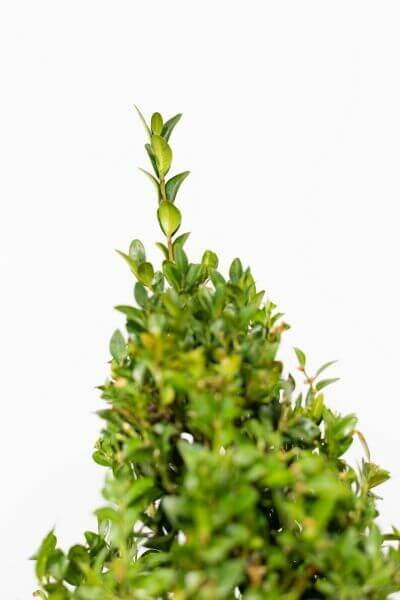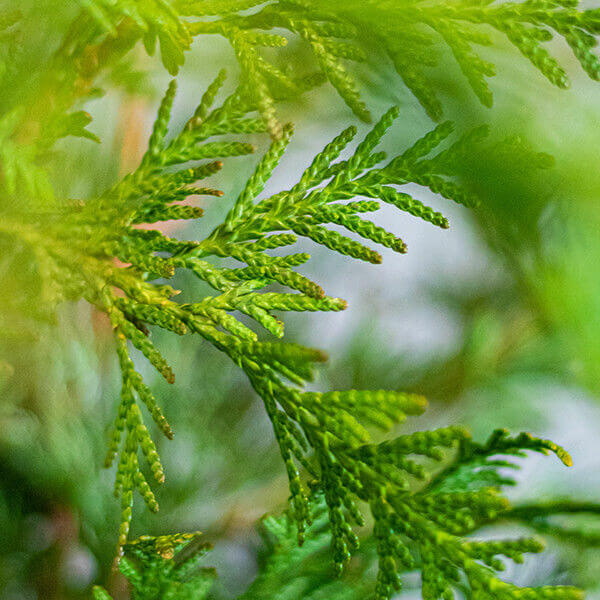Best Hedge Plants For Hedges And Screens
Best Hedge Plants For Hedges And Screens
Blog Article
Hedging Plants For Zen Gardens
Boost your garden's allure with lavish hedge varieties such as Yew (Taxus), Thuja, Laurel, Photinia, and Bamboo, celebrated for their structural stability and environmental advantages.
Yew and Thuja provide evergreen coverage and winter resilience, while Laurel provides fast growth and broad, fragrant leaves.
Photinia adds seasonal charm with its lively red foliage, and Bamboo provides a low-maintenance, peaceful atmosphere.
These hedges enhance air quality, decrease noise, and create tranquil, private areas.
Correct planting, spacing, and maintenance ensure vigorous development and ecological consistency.
Explore how these lush varieties can raise your garden's charm and well-being.
Key Takeaways
Change Your Garden With Lush Hedge Varieties
- Select Yew for its thick, evergreen development and unequaled longevity.
- Opt for Laurel for its quick growth and broad leaves, ensuring fast privacy.
- Pick Photinia for its dynamic seasonal foliage, which turns a striking dark red.
- Utilize Bamboo for a low-maintenance, winter-hardy hedge with visual appeal.
- Space plants 2-3 per meter and prune regularly for optimal development and health.
Popular Hedge Plants
When transforming a garden with lavish hedge varieties, it's important to think about popular hedge plants such as Yew, Thuja, Laurel, and Photinia due to their unique qualities and benefits.
Yew (Taxus) is highly respected for its longevity and thick, green growth, making it a prime option for enduring landscapes.
Thuja is noted for its evergreen foliage and robust winter season resilience.
Photinia includes seasonal vibrancy with red leaves that darken in time, developing dynamic visual appeal.
Laurel uses rapid development and fragrant, broad leaves, perfect for quick personal privacy.
In Addition, Bamboo is an outstanding option for ambiance, providing a low-maintenance, winter-hardy alternative that enhances the garden's visual with its elegant, swaying walking canes.
These selections accommodate a range of horticultural needs and choices.
Advantages of Garden Hedges
Garden hedges offer a wide variety of advantages, making them a valuable addition to any landscape. These natural barriers are economical to carry out and offer significant wind security, boosting air blood circulation and contributing to noise reduction. The dense foliage of hedges like Thuja and Beech guarantees personal privacy by blocking visibility, producing a remote and tranquil environment.
Hedges likewise play a crucial function in microclimate guideline, supplying a steady environment that cultivates plant growth and minimizes temperature fluctuations. Their elaborate leaf structures filter contaminants, improving air quality and contributing to a healthier garden environment.
Moreover, hedges excel in noise reduction, absorbing and deflecting sound waves to lower ambient sound levels. This double performance of supplying both visual and acoustic privacy enhances the overall harmony and visual appeal of any garden.
Planting and Upkeep Tips
For an effective hedge, careful preparation of the planting location is important. Make sure the soil has correct pH and drainage to support strong root advancement.
Area the plants appropriately for the chosen types. Water the hedge regularly during its initial development phase, adjusting as required with seasonal modifications.
Execute a systematic bug control and illness prevention strategy, utilizing chemical or organic treatments when essential. Routinely inspect for aphids, termites, and fungal infections.
Apply mulch to keep moisture and reduce weeds. Seasonal pruning promotes dense development and air blood circulation, vital for plant health.
Following these standards will help you cultivate a vibrant, properly maintained hedge that improves the beauty of your garden.
Spacing and Trimming Standards
Spacing and Trimming Guidelines
Proper spacing and cutting are important for cultivating healthy, visually appealing hedges. Appropriate spacing guarantees each plant gets adequate nutrients, light, and air flow.
Follow these guidelines for ideal hedge upkeep:
- Spacing: Position hedge plants 2-3 plants per meter to motivate robust growth.
- Pruning Strategies: Regular pruning is essential for preserving wanted hedge height and shape. Trim brand-new development in summer and cut down older wood throughout winter.
- Seasonal Care: Change cutting schedules and techniques according to seasonal requirements to guarantee plant health.
- Hedge Height: Frequently monitor and trim to keep the desired hedge height and accomplish consistent aesthetics.
Adhering to these steps will guarantee your hedge grows, boosting both the appeal and functionality of your garden.
Choosing the Right Hedge
Selecting the Right Hedge
Picking the appropriate hedge involves assessing elements such as fully grown height, foliage density, and ecological strength. Effective hedge plant choice needs comprehending each species' development qualities and site-specific flexibility.
For instance, Yew (Taxus) uses exceptional durability and thick development, while Thuja is noteworthy for its winter durability. In addition, thinking about upkeep requirements is vital; fast-growing types like Laurel or Privet need routine trimming, whereas low-maintenance options like Bamboo or Ivy might be preferable for those seeking very little upkeep.
Environmental factors such as soil type, light schedule, and wetness conditions ought to likewise direct the choice process. This careful technique ensures the picked hedges will thrive, offering both functional and visual advantages to the garden landscape.
Delivery and Planting Guidance
To ensure your hedge plants flourish, they should be delivered by specialized carriers and planted immediately upon arrival.
Follow these necessary actions for successful planting:
- Soil Preparation: Enhance the soil with raw material to improve drain and nutrient material.
- Planting Depth: Create a trench twice the width and equal to the depth of the root ball.
- Watering Techniques: Water completely after planting, keeping the soil regularly moist however not filled.
- Mulching: Apply a layer of mulch to maintain wetness and suppress weeds.
Consumer Assistance and Service
Provided the crucial function of timely help in horticultural pursuits, our client support group is available 6 days a week through telephone, e-mail, and social networks to provide skilled recommendations and promptly attend to any concerns. Their devotion to quick action times guarantees client complete satisfaction by resolving inquiries related to plant health, ideal planting methods, and maintenance schedules.

Availability
-------------------
Within 24 hours
Within 24 hours
This extensive support group, strengthened by an excellent 9.3/ 10 consumer rating, highlights our commitment to enhancing the gardening experience for each client.
Often Asked Questions
For How Long Does It Consider Hedge Plants to Develop?
Hedge plants normally need one to 3 years to end up being totally established, with the exact period differing by types and growing conditions.
Efficient care throughout this vital duration is vital for robust growth. Consistent watering, vigilant weed control, and appropriate fertilizer application are pivotal in promoting strong root advancement.
For instance, fast-growing types like Laurel may establish quicker, while slower-growing varieties such as Yew might take longer. Thorough upkeep speeds up the establishment process, leading to thick and healthy hedges.
What Are the Best Hedge Plants for Privacy?
The concern of the very best hedge plants for privacy involves examining evergreen and deciduous alternatives.
Evergreen hedges like Thuja, Laurel, and Cypress offer year-round coverage, ensuring constant privacy.
In contrast, deciduous hedges such as Beech provide seasonal privacy, shedding leaves in colder months.
Secret maintenance tips for personal privacy hedges include routine cutting, fertilizing in spring, and proper spacing-- normally 2 to 3 plants per meter.
Furthermore, consistent watering and thorough weed removal are vital for promoting healthy, dense development.
Can Hedge Plants Draw In Wildlife to My Garden?
Yes, hedge plants can attract wildlife to your garden by supplying important advantages like shelter, food, and nesting sites, therefore boosting local biodiversity. For example, yew, holly, and laurel are outstanding for attracting birds, while ivy supports a range of insects.
However, it is necessary to note that there are some downsides, such as increased maintenance to manage bugs and regular maintenance. Thoroughly selecting and keeping hedge varieties can help stabilize these benefits and disadvantages, ultimately promoting a vibrant and sustainable community in your garden.
Exist Any Flowering Hedge Plants Available?
Yes, there are flowering hedge plants offered that can improve the beauty of your garden.
For example, Elaeagnus, likewise called Olive Willow, produces fragrant white flowers in the fall, adding a touch of beauty.
Photinia, another popular option, showcases lively red leaves that mature into a rich green, producing a vibrant visual result throughout the seasons.
To ensure these plants flourish, it's important to practice correct pruning strategies and seasonal upkeep, such as cutting brand-new development in the summer and cutting back in the winter.
These steps will assist preserve the health and visual appeal of your blooming hedges.
How Do I Avoid Bugs in My Hedge Plants?
To avoid bugs in hedge plants, use natural bug control approaches and keep correct hedge care. Present helpful pests like ladybugs, which victimize damaging bugs, to develop a balanced community.
Routinely examine your hedges for signs of infestation and quickly remove any Additional reading affected parts to avoid the spread. Make sure the health of your hedges by using balanced fertilizers and providing adequate water.
Make use of mulching to keep soil moisture and proper spacing to reduce plant tension and promote robust development. These practices collectively help in minimizing bug concerns and preserving a healthy hedge.
Conclusion
In essence, choosing the right hedge ranges such as Yew, Thuja, and Laurel can transform any garden into a peaceful sanctuary. These plants supply year-round greenery, enhance visual appeal, and offer useful advantages like noise reduction and wind defense.
Appropriate planting techniques, precise spacing, consistent watering, and seasonal trimming are crucial for optimal development.
Trusted shipment services and expert consumer support make sure a seamless experience from purchase to planting, making it easier than ever to raise your outdoor space.
Garden hedges provide a wide variety of benefits, making them an important addition to any landscape. These natural barriers are affordable to carry out and offer substantial wind security, boosting air circulation and contributing to sound reduction. The thick foliage of hedges like Thuja and Beech makes sure privacy by blocking visibility, producing a remote and serene environment.

Pruning Techniques: Regular pruning is necessary for keeping preferred hedge height and shape. Trim brand-new growth in summer season and cut back older wood throughout winter.
Report this page